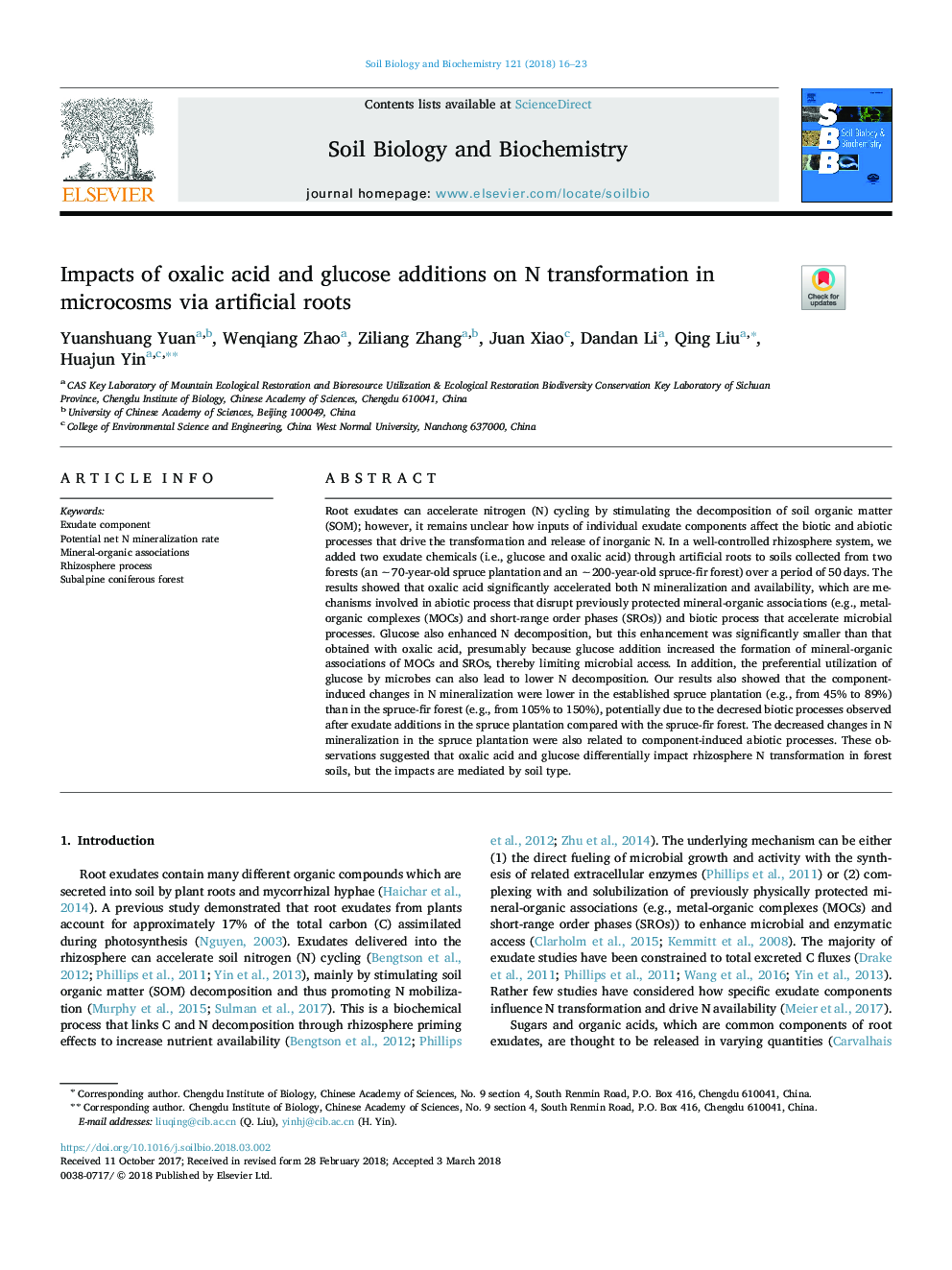| Article ID | Journal | Published Year | Pages | File Type |
|---|---|---|---|---|
| 8362747 | Soil Biology and Biochemistry | 2018 | 8 Pages |
Abstract
Root exudates can accelerate nitrogen (N) cycling by stimulating the decomposition of soil organic matter (SOM); however, it remains unclear how inputs of individual exudate components affect the biotic and abiotic processes that drive the transformation and release of inorganic N. In a well-controlled rhizosphere system, we added two exudate chemicals (i.e., glucose and oxalic acid) through artificial roots to soils collected from two forests (an â¼70-year-old spruce plantation and an â¼200-year-old spruce-fir forest) over a period of 50 days. The results showed that oxalic acid significantly accelerated both N mineralization and availability, which are mechanisms involved in abiotic process that disrupt previously protected mineral-organic associations (e.g., metal-organic complexes (MOCs) and short-range order phases (SROs)) and biotic process that accelerate microbial processes. Glucose also enhanced N decomposition, but this enhancement was significantly smaller than that obtained with oxalic acid, presumably because glucose addition increased the formation of mineral-organic associations of MOCs and SROs, thereby limiting microbial access. In addition, the preferential utilization of glucose by microbes can also lead to lower N decomposition. Our results also showed that the component-induced changes in N mineralization were lower in the established spruce plantation (e.g., from 45% to 89%) than in the spruce-fir forest (e.g., from 105% to 150%), potentially due to the decresed biotic processes observed after exudate additions in the spruce plantation compared with the spruce-fir forest. The decreased changes in N mineralization in the spruce plantation were also related to component-induced abiotic processes. These observations suggested that oxalic acid and glucose differentially impact rhizosphere N transformation in forest soils, but the impacts are mediated by soil type.
Keywords
Related Topics
Life Sciences
Agricultural and Biological Sciences
Soil Science
Authors
Yuanshuang Yuan, Wenqiang Zhao, Ziliang Zhang, Juan Xiao, Dandan Li, Qing Liu, Huajun Yin,
